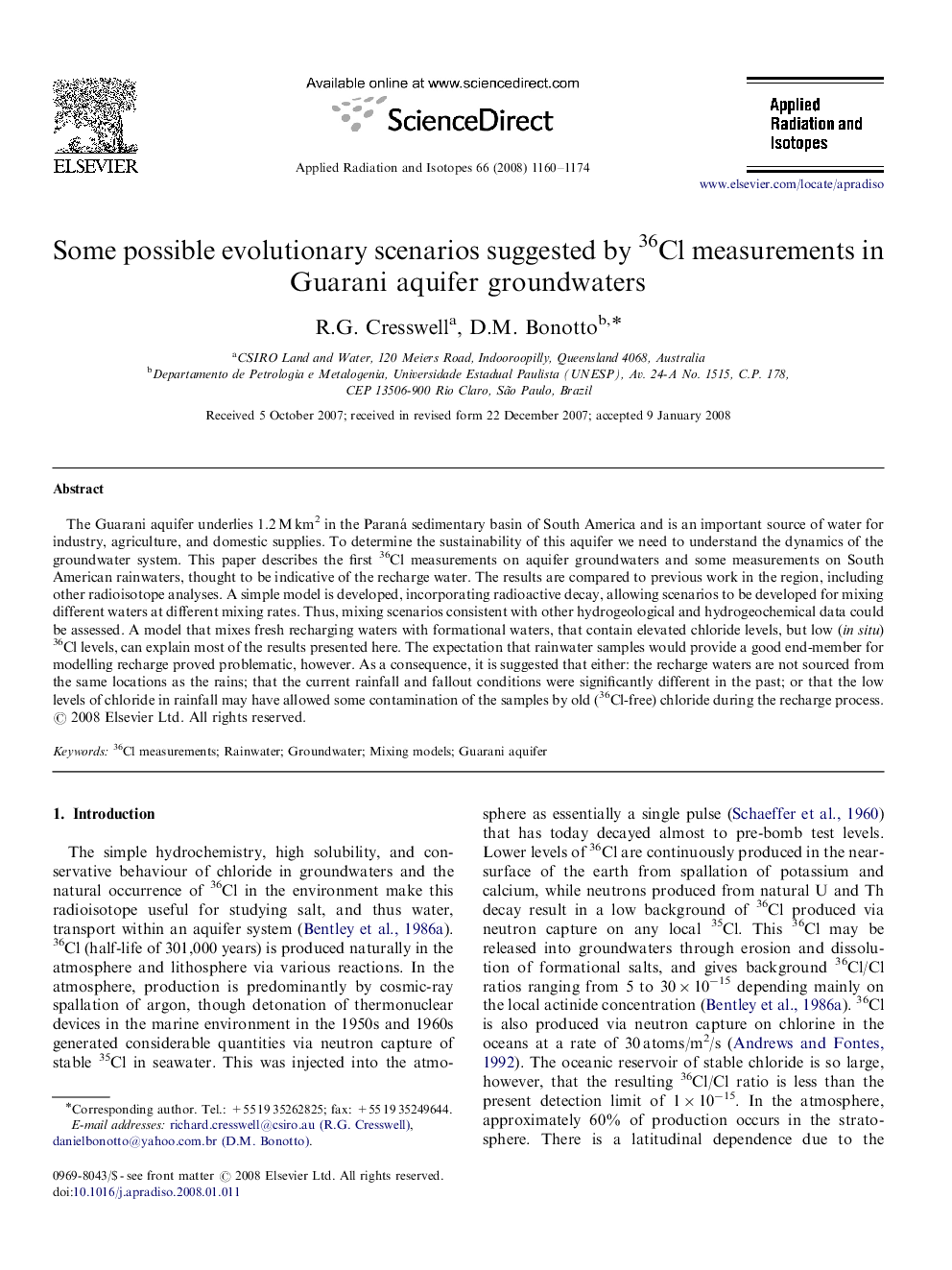| Article ID | Journal | Published Year | Pages | File Type |
|---|---|---|---|---|
| 1877105 | Applied Radiation and Isotopes | 2008 | 15 Pages |
The Guarani aquifer underlies 1.2 M km2 in the Paraná sedimentary basin of South America and is an important source of water for industry, agriculture, and domestic supplies. To determine the sustainability of this aquifer we need to understand the dynamics of the groundwater system. This paper describes the first 36Cl measurements on aquifer groundwaters and some measurements on South American rainwaters, thought to be indicative of the recharge water. The results are compared to previous work in the region, including other radioisotope analyses. A simple model is developed, incorporating radioactive decay, allowing scenarios to be developed for mixing different waters at different mixing rates. Thus, mixing scenarios consistent with other hydrogeological and hydrogeochemical data could be assessed. A model that mixes fresh recharging waters with formational waters, that contain elevated chloride levels, but low (in situ) 36Cl levels, can explain most of the results presented here. The expectation that rainwater samples would provide a good end-member for modelling recharge proved problematic, however. As a consequence, it is suggested that either: the recharge waters are not sourced from the same locations as the rains; that the current rainfall and fallout conditions were significantly different in the past; or that the low levels of chloride in rainfall may have allowed some contamination of the samples by old (36Cl-free) chloride during the recharge process.
